There’s a secret to marketing your salon. Do you want to know what it is?
~ Bows ~
 That’s right, bows. Well-made, brightly colored, and altogether wonderful, bows. The bow is your secret weapon and one of your best marketing tools.
That’s right, bows. Well-made, brightly colored, and altogether wonderful, bows. The bow is your secret weapon and one of your best marketing tools.
“Seriously?! I thought bows were just for decoration?”
Bows are a genius marketing tool. They bring attention to your business. In a nutshell, that little splash of color is doing your promotion work for you.
How?
The best part about this tip is that you already know the answer. Look at this page. What grabbed your attention first? Was it the pictures? The colorful text? If so, that’s no accident. The eye is naturally attracted to bright colors.
Beautifully groomed pets attract even more attention when they have a bright splash of color. Applying bows as a finishing touch on a marvelous groom is a sure way to generate interest.
Getting attention is the #1 goal of any marketing campaign. Beautiful bows do that in a fun and attractive way.
Accessorizing a freshly groomed dog can be a highly successful marketing opportunity. Adding colorful bows to a pet can be the perfect way to get owners talking about your styling services any time others see them.
I learned this trick when I was very young, with our family’s first dog.
When we traveled, we’d send our Golden Retriever to a local kennel before we left. When we picked her up, she’d always be freshly bathed and sporting a simple, felt fabric bow on her collar. The bow color would change with the seasons, but this simple bow was there every time.
In our small community you could always tell when a neighbor had been traveling, because his dog would be wearing the same type of bow. As we stopped and chatted, mixed in with the conversation would be the name of the kennel and how wonderful they were.
If that basic little bow had not been there, the kennel name would never have been mentioned, and a marketing opportunity would have been missed.
I carried these lessons of my childhood over into my grooming business. Every dog that stepped out of my salon or mobile van had this bright finishing touch – unless the client requested otherwise – which wasn’t very often.
The bows were always subtle and stylish. I used the seasons and holidays to dictate the color and themes of the bows.
Christmas and springtime bows were always popular. At Christmas, we pulled out all the stops to add a festive sparkle and shine to the bows. In the Spring, we made basic bows adorned with small silk flowers. After a long Michigan Winter, this fun little bow lifted everyone’s spirits.
Successful people know that the difference between good and great is in the details. Bows and finishing touches are part of the entire service package you offer to your clients.
 Making attractive bows does require finesse. It takes a bit of time to learn. But once you figure out a method that works well for you, you will be limited only by your own creative spirit and time.
Making attractive bows does require finesse. It takes a bit of time to learn. But once you figure out a method that works well for you, you will be limited only by your own creative spirit and time.
Many professional groomers and stylists use down time to create bows, in the same way that many people use knitting or crocheting to relax.
However, if basic bow tying just isn’t for you, there are many companies that specialize in wonderful, ready-to-use bows. We encourage you to use them!
There are thousands of ways to market yourself as a professional pet groomer. Choosing to accessorize a freshly groomed dog can generate lots of word-of-mouth advertising. Adding colorful bows to a pet gets people talking about – and remembering – your styling services.
Isn’t it time you took advantage of the best sales tool for your business?
Happy Trimming!
~ Melissa
P.S.
Did this idea help? Go online and tell us what you think on the Learn2GroomDogs Facebook page.


 “I have a (insert breed here). Do you know how to groom them correctly?”
“I have a (insert breed here). Do you know how to groom them correctly?” The Internet is an invaluable research tool. Use it wisely. Most breeds will have a parent club that hosts an official site for the breed. Spend a few minutes reviewing images of top winning dogs in their galleries. With a little luck, you may even find grooming directions or links to grooming directions from dedicated breeders.
The Internet is an invaluable research tool. Use it wisely. Most breeds will have a parent club that hosts an official site for the breed. Spend a few minutes reviewing images of top winning dogs in their galleries. With a little luck, you may even find grooming directions or links to grooming directions from dedicated breeders.
 As pet groomers and stylists, we get to see plenty of dogs. It’s rare and exciting to get a breed you are not familiar with. Most of us pros enjoy the challenge of learning about a new breed. Figuring out what we will need to do to make the dog look like it should – or could – look like if the owners allow you to groom it correctly.
As pet groomers and stylists, we get to see plenty of dogs. It’s rare and exciting to get a breed you are not familiar with. Most of us pros enjoy the challenge of learning about a new breed. Figuring out what we will need to do to make the dog look like it should – or could – look like if the owners allow you to groom it correctly.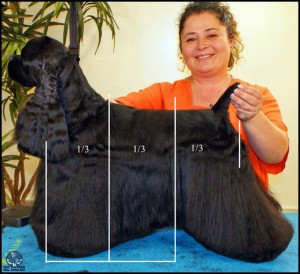


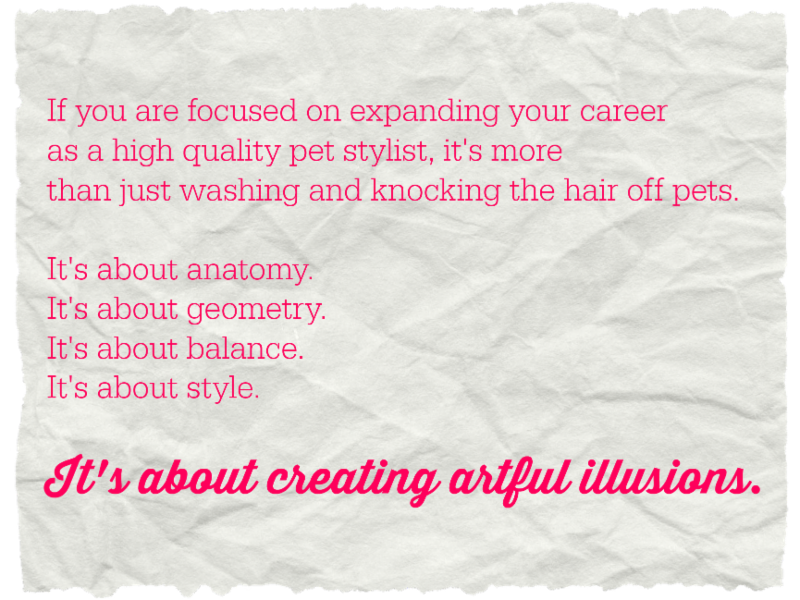 We had many more aha! moments while we watched Pina work her magic on these six lovely dogs. We will be releasing Pina’s latest L2GD video lessons all through 2016.
We had many more aha! moments while we watched Pina work her magic on these six lovely dogs. We will be releasing Pina’s latest L2GD video lessons all through 2016.
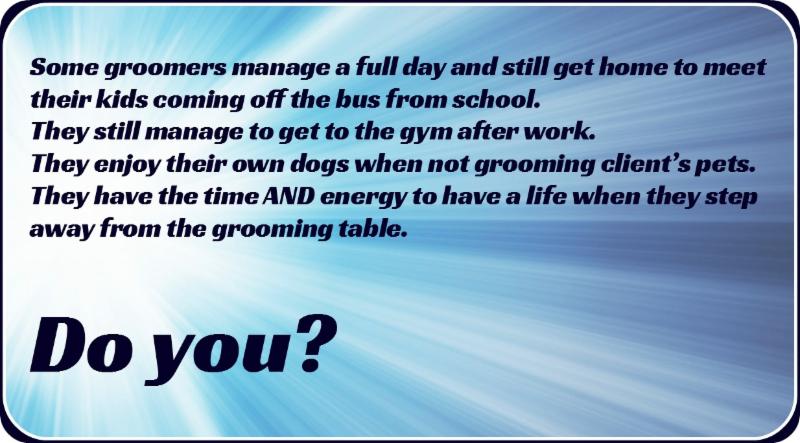 Generally speaking, the faster you can get a dog to the tub, the faster the trim will go. Dogs with six weeks or less coat growth can normally go straight to the tub. With today’s products, shampoos, conditioners, and high velocity dryers, much of the pre-work can be eliminated. Dematting or pre-trimming is a waste of time with six weeks or less trims.
Generally speaking, the faster you can get a dog to the tub, the faster the trim will go. Dogs with six weeks or less coat growth can normally go straight to the tub. With today’s products, shampoos, conditioners, and high velocity dryers, much of the pre-work can be eliminated. Dematting or pre-trimming is a waste of time with six weeks or less trims.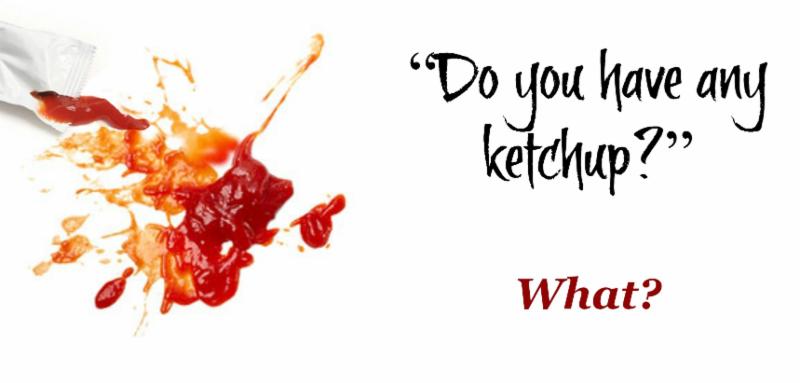 But how do you know exactly what to reach for when a unique situation presents itself? Sometimes you don’t always know what you need. Or maybe what you need is a specialty item and you don’t have it at your fingertips. What do you do then?
But how do you know exactly what to reach for when a unique situation presents itself? Sometimes you don’t always know what you need. Or maybe what you need is a specialty item and you don’t have it at your fingertips. What do you do then?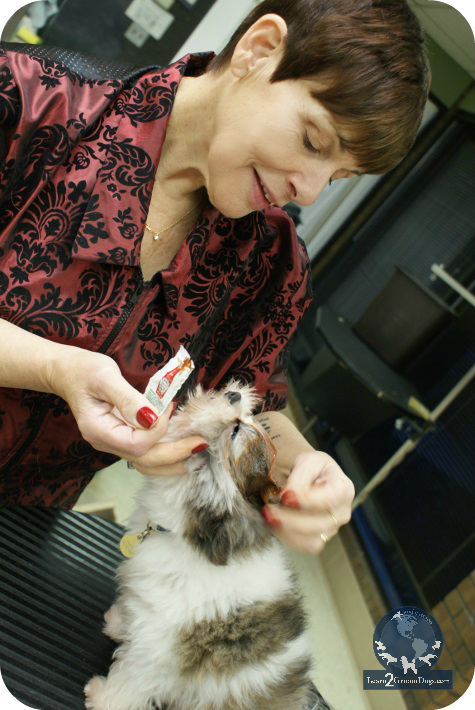 loving homes. The family supplying the dogs for the Learn2Groom film shoot had adopted three of the puppies. Many of the rescued pets were Shih Tzus, Pomeranians, Malteses, or mixes of the three breeds.
loving homes. The family supplying the dogs for the Learn2Groom film shoot had adopted three of the puppies. Many of the rescued pets were Shih Tzus, Pomeranians, Malteses, or mixes of the three breeds.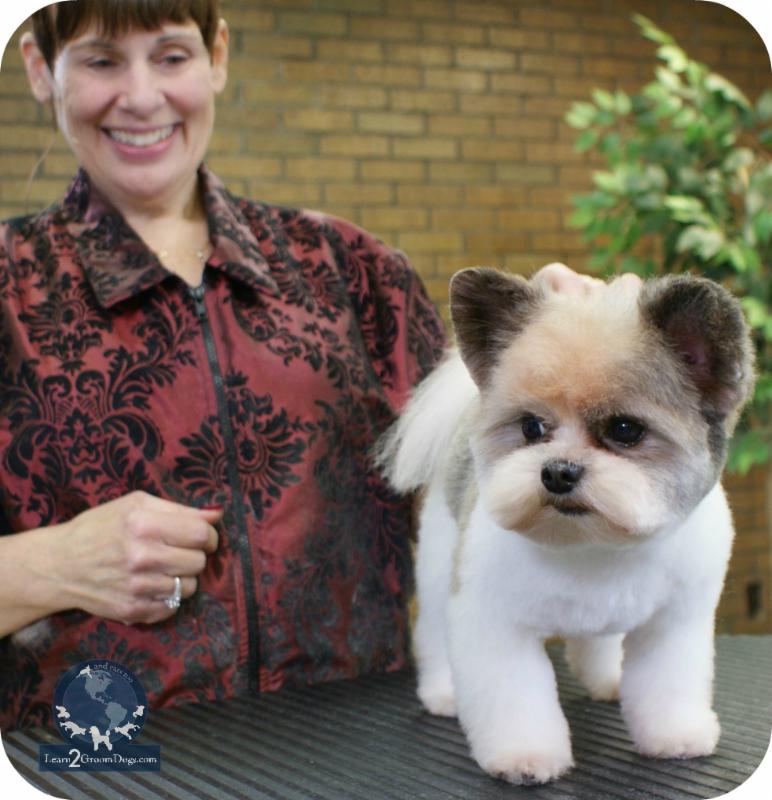 Sue suggested that we do a couple more applications in the future to really lighten the top of his head.
Sue suggested that we do a couple more applications in the future to really lighten the top of his head. 1. Step into the session with a very open mind.
1. Step into the session with a very open mind. As your knowledge and skills advance, the clinics won’t be as daunting. They will become a great way for you to fine-tune your skills. You can begin to network and exchange thoughts with others in the industry who can provide insight when you need it. Plus, these types of functions are a great way to invigorate your career.
As your knowledge and skills advance, the clinics won’t be as daunting. They will become a great way for you to fine-tune your skills. You can begin to network and exchange thoughts with others in the industry who can provide insight when you need it. Plus, these types of functions are a great way to invigorate your career. When I was a contest groomer, I always did my Poodle cuffs by hand. I would brush the coat down then give it a quick fluff with my comb. Once it was fluffed, I’d glide a long straight shear in and set the lower edge. Then I’d re-fluff and grab my long curved shears to round and bevel the edges. It was time-consuming.
When I was a contest groomer, I always did my Poodle cuffs by hand. I would brush the coat down then give it a quick fluff with my comb. Once it was fluffed, I’d glide a long straight shear in and set the lower edge. Then I’d re-fluff and grab my long curved shears to round and bevel the edges. It was time-consuming. Once my cuff was set, I would neaten and finish the entire leg with shears, smoothing out my guard comb work.
Once my cuff was set, I would neaten and finish the entire leg with shears, smoothing out my guard comb work. Stop and hold the foot with your fingers coming to rest right at the clipped cuff line. While maintaining your hold on the foot, gently trim at right angles around the cuff with the #30 or #40 blade. Simply touch the coat at the edge line you want to set.
Stop and hold the foot with your fingers coming to rest right at the clipped cuff line. While maintaining your hold on the foot, gently trim at right angles around the cuff with the #30 or #40 blade. Simply touch the coat at the edge line you want to set.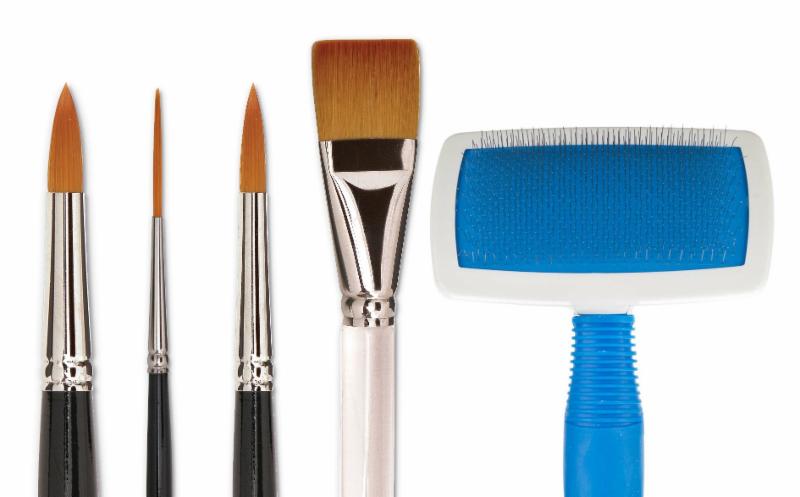 If you ask people in our industry if they think grooming and styling pets is an art form or a skilled trade, most would say that it’s a little of both. I agree. When you watch members of GroomTeam USA at work, their efforts are definitely works of art. Skills like theirs take years to develop. Today, I want to talk about one aspect of that development: learning to see like an artist.
If you ask people in our industry if they think grooming and styling pets is an art form or a skilled trade, most would say that it’s a little of both. I agree. When you watch members of GroomTeam USA at work, their efforts are definitely works of art. Skills like theirs take years to develop. Today, I want to talk about one aspect of that development: learning to see like an artist. So I’m staring at the page… what am I looking at? What am I looking for? When I’m staring at that blank sheet of paper, I’m seeing what I will put there. As I stare into that whiteness, I’m watching the colors and lines take shape in my mind and align themselves on the page. It’s like my mind has produced a transparency of the finished product and has mentally created an overlay onto the page. All I have to do is put the marks on the paper. If I’m sculpting, I’m staring at the lump of rock and seeing the shape of what I want to create in the stone. All I have to do is remove all the stuff around it and let it out.
So I’m staring at the page… what am I looking at? What am I looking for? When I’m staring at that blank sheet of paper, I’m seeing what I will put there. As I stare into that whiteness, I’m watching the colors and lines take shape in my mind and align themselves on the page. It’s like my mind has produced a transparency of the finished product and has mentally created an overlay onto the page. All I have to do is put the marks on the paper. If I’m sculpting, I’m staring at the lump of rock and seeing the shape of what I want to create in the stone. All I have to do is remove all the stuff around it and let it out.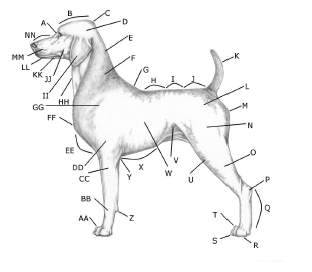 Trim styles are all about anatomy. Groomers need to know their breed standards and to know them they need to understand anatomy. If you’re a visual learner, get out your reference material and study the images until you can see them on any dog that walks into your salon. If you’re a tactile student and learn by doing, get those books out and learn to find reference points on dogs through your sense of touch. Feel where the point of rump is, the point of shoulder, and the barrel of the chest. If you can’t see them, learn your anatomy reference points by touch. Then learn to do both. Developing your knowledge base creates reliable instincts and reflexes.
Trim styles are all about anatomy. Groomers need to know their breed standards and to know them they need to understand anatomy. If you’re a visual learner, get out your reference material and study the images until you can see them on any dog that walks into your salon. If you’re a tactile student and learn by doing, get those books out and learn to find reference points on dogs through your sense of touch. Feel where the point of rump is, the point of shoulder, and the barrel of the chest. If you can’t see them, learn your anatomy reference points by touch. Then learn to do both. Developing your knowledge base creates reliable instincts and reflexes.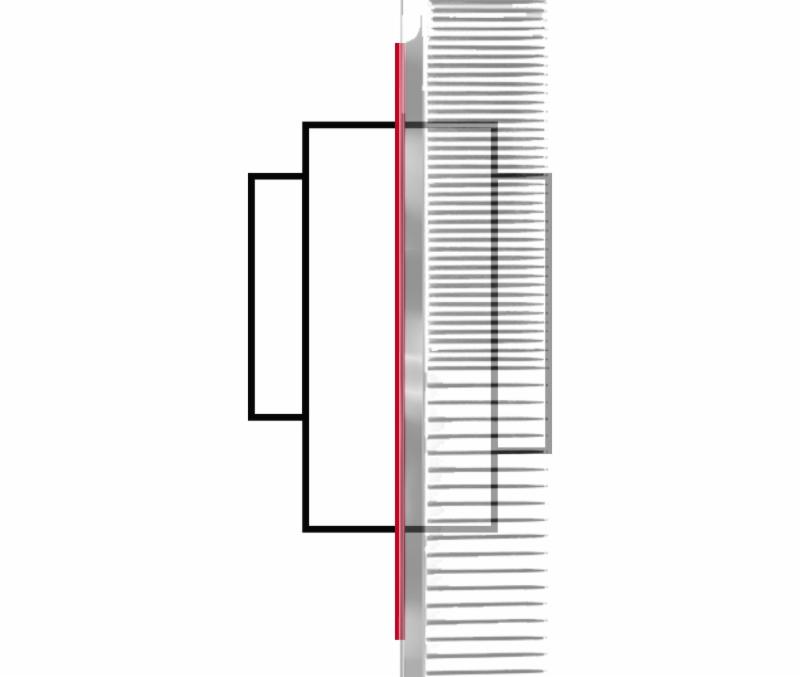
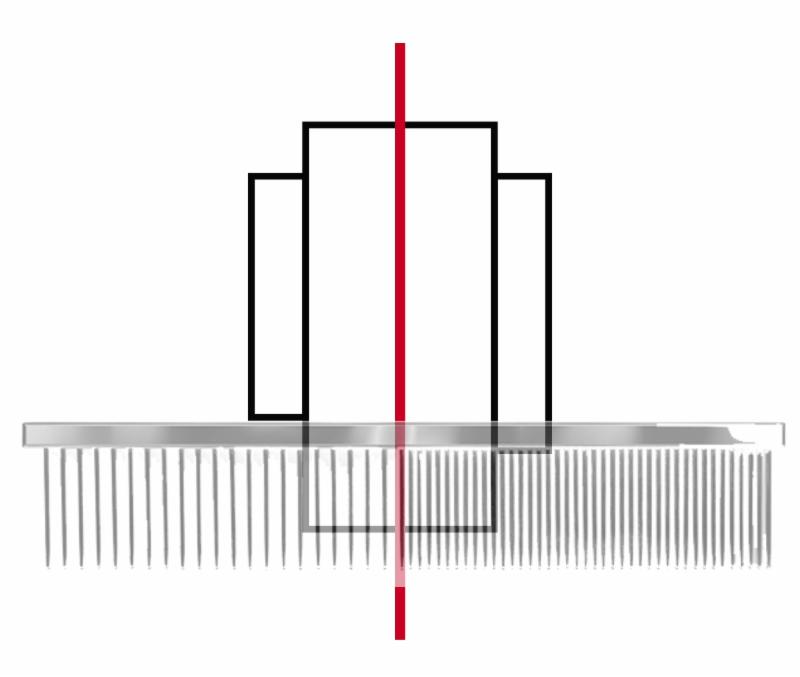
 We all have different reasons why we love our careers. For most of us, our careers started because we were obsessed with dogs and cats. What a fabulous way to make money – doing something you enjoy. My guess is that many of you not only love animals, they’re also a hobby and a huge part of your lives. I know very few career opportunities that allow pet lovers to work in a field that they truly adore.
We all have different reasons why we love our careers. For most of us, our careers started because we were obsessed with dogs and cats. What a fabulous way to make money – doing something you enjoy. My guess is that many of you not only love animals, they’re also a hobby and a huge part of your lives. I know very few career opportunities that allow pet lovers to work in a field that they truly adore. There’s a big difference between grooming efficiently and grooming fast. Grooming efficiently involves doing a good job. Grooming too fast, in my eyes, translates to sloppy work. When I look at developing a grooming team or training new staff members, I always look for people who have the ability to focus and work efficiently.
There’s a big difference between grooming efficiently and grooming fast. Grooming efficiently involves doing a good job. Grooming too fast, in my eyes, translates to sloppy work. When I look at developing a grooming team or training new staff members, I always look for people who have the ability to focus and work efficiently.
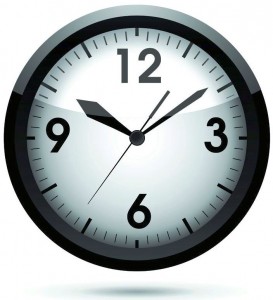
 If you want to be a successful groomer who can pay your bills while bringing customers back again and again – you need to embrace time.
If you want to be a successful groomer who can pay your bills while bringing customers back again and again – you need to embrace time. For those individuals that are really looking to increase their speed, having a timer at their stations can be really beneficial. Before you can start timing yourself, it’s helpful to know what your starting point is.
For those individuals that are really looking to increase their speed, having a timer at their stations can be really beneficial. Before you can start timing yourself, it’s helpful to know what your starting point is.
